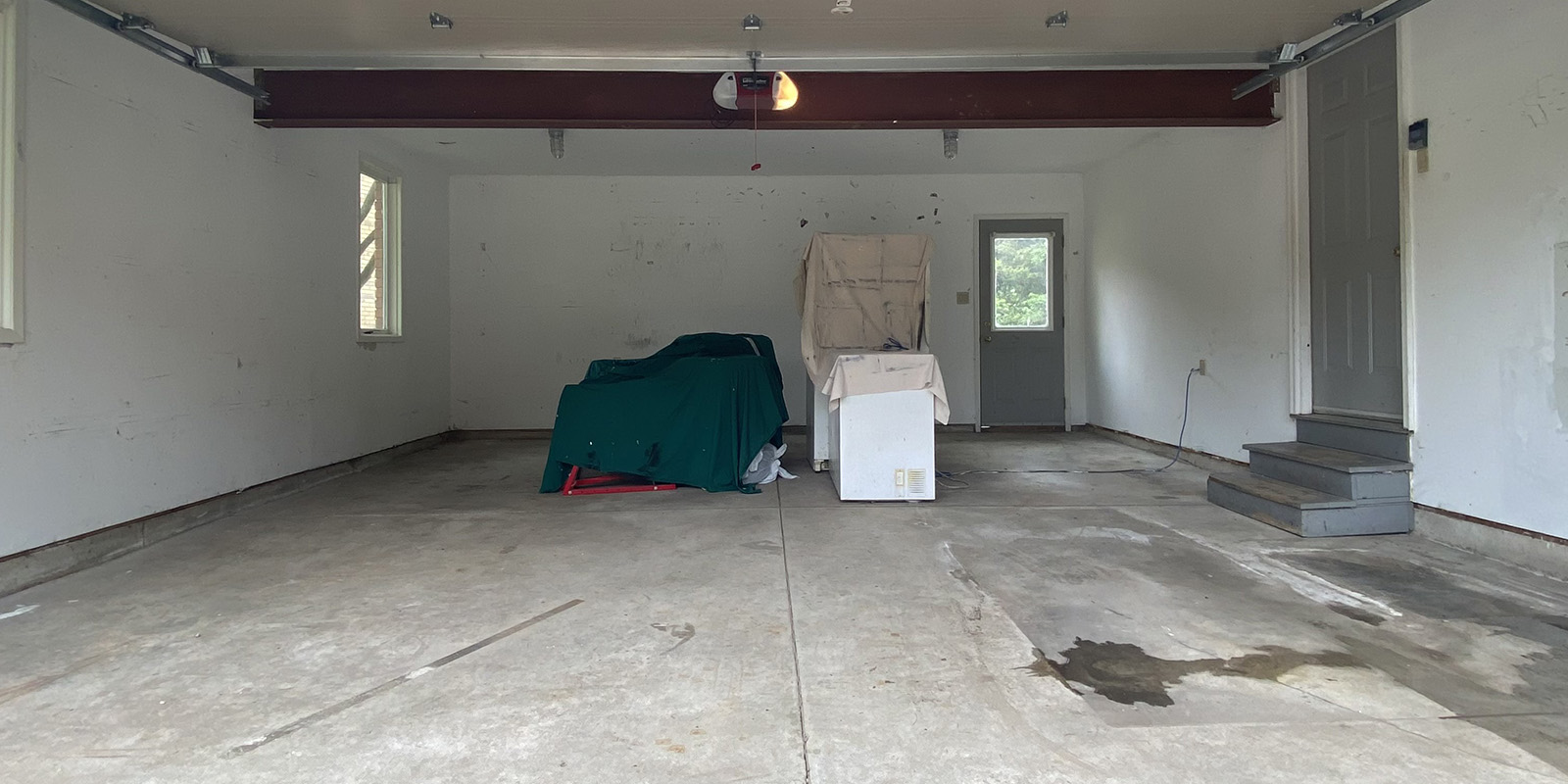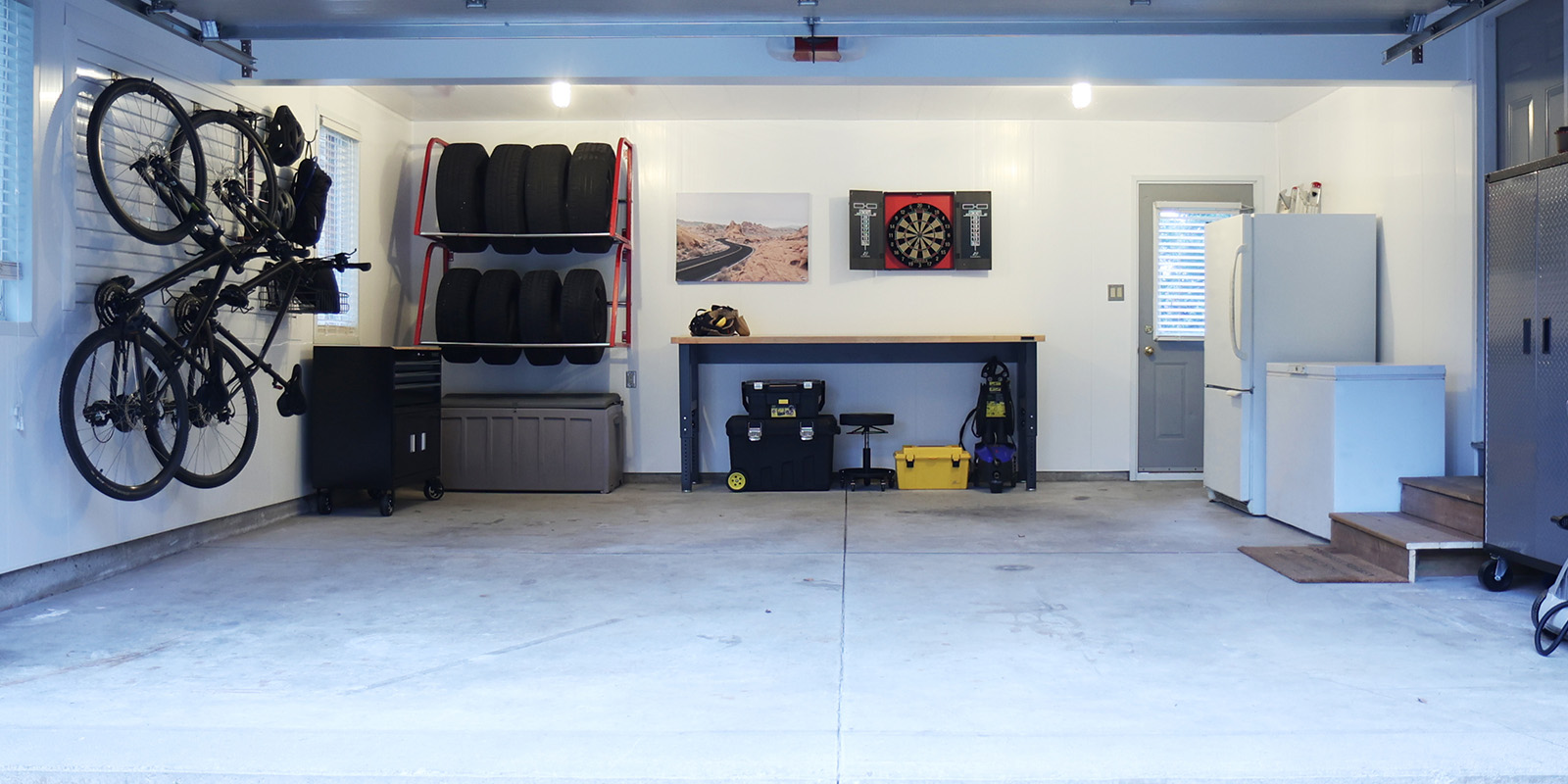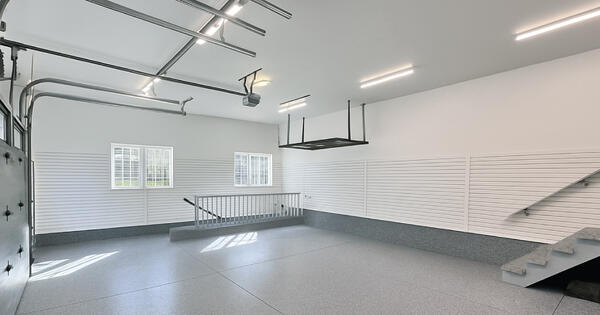This post was originally published in June 2022. Last updated: June 2025.
Drywall might not be the flashiest feature in your home, but it’s one of the most visible and one of the most overlooked. A clean, smooth finish sets the stage for everything else in a room, from paint and trim to décor and lighting. But when it’s done poorly, it’s hard to ignore.
A bad drywall job can lead to a range of problems, from cosmetic eyesores to bigger issues that impact the long-term value and livability of your home. Sloppy seams, bumpy finishes, and crooked corners can make even a freshly renovated space look amateur. If the work wasn’t done properly behind the scenes — like rushed mudding or poor taping — those imperfections can show up months or even years later, just when you think the project is behind you.
So whether you’ve just had new drywall installed, or you’re walking through a house you’re thinking about buying, knowing what to watch for can save you time, money, and a whole lot of hassle.
Common Signs of a Bad Drywall Job
Even if you’re not a contractor, you can still spot a drywall job that wasn’t done right. In most cases, the signs are easy to see once you know what to look for. Here are some of the most common indicators that you might be dealing with a bad drywall job:
- Visible seams or joint lines: You shouldn’t be able to see where one drywall sheet ends and the next begins. If seams are showing through paint or primer, it likely means the taping and mudding were rushed or done unevenly.
- Uneven corners: Corners should be crisp and consistent. If they look rounded, crooked, or vary from wall to wall, it’s a clear sign of sloppy finishing.
- Bubbling or blistering under tape: This usually happens when joint compound is applied too thinly or dries too quickly. Over time, the tape may peel or crack, making repairs more complicated.
- Nail or screw pops: When fasteners start to protrude from the surface, it’s often due to poor installation or improper anchoring into the studs.
- Cracking or flaking: Cracks can appear when mud dries too fast or isn’t applied in enough layers. Flaking paint may follow if the drywall wasn’t properly prepped or primed.
- Lumpy, wavy, or uneven surfaces: A wall should be flat to the touch and smooth to the eye. Any noticeable dips, humps, or waves could mean the boards weren’t installed flush or the mudding was uneven.
- Poor sanding or inconsistent texture: If you can see scratch marks, rough patches, or varying textures across a single wall, the final sanding was likely rushed or skipped altogether.
- Corners that aren’t square: Walls should meet at clean, consistent 90-degree angles. If they don’t, it could throw off trim installation or furniture placement and it usually points to poor framing or drywall application.
If you’re seeing one or more of these signs, it may be time to take a closer look and possibly bring in a second opinion.
What Causes a Bad Drywall Job?
There’s no single reason why drywall work goes wrong. In most cases, it’s a combination of poor planning, poor workmanship, or poor materials. Understanding what leads to a bad drywall job can help you avoid making the same mistakes in your own renovation. Let’s break down a few of the most common causes:
- Inexperienced or unqualified labor: Drywall finishing is part art, part technique. If the person doing the job lacks experience — especially when it comes to taping, mudding, or sanding — the results are going to show.
- Rushed timelines: Drywall finishing takes time, especially when it comes to drying between coats of joint compound. If your contractor is in a hurry to move on to the next job, they might cut corners, leading to bubbling, cracking, or uneven texture.
- Improper materials: Using low-quality drywall, cheap joint compound, or the wrong fasteners can lead to long-term issues. It’s not just about how it looks right after installation. It’s about how it holds up over time.
- Ignoring drying times and best practices: Each coat of mud needs time to dry fully before the next one goes on. Skipping steps, failing to sand between coats, or applying too much compound at once can all create visible flaws.
- Poor site conditions: Humidity, temperature swings, and a dusty environment can interfere with drying and adhesion. If a contractor doesn’t account for these factors, the finish may not bond properly to the surface.
In many cases, a bad drywall job isn’t obvious until the paint goes on or until the seasons change and cracks start to appear. Knowing the root causes helps explain why things went wrong and what to ask about before hiring someone to fix it.
How to Inspect Drywall Work Like a Pro
Not all drywall flaws are easy to spot at first glance, especially if you’re not sure what you’re looking for. But with a few simple tools and the right approach, any homeowner can inspect drywall like a pro. To help you evaluate whether you’re dealing with a bad drywall job, follow this step-by-step checklist:
- Use side lighting or a flashlight: Shine a light across the wall at a shallow angle. This helps exaggerate imperfections like bumps, ridges, and uneven taping that aren’t visible under normal lighting.
- Run your hand over the surface: A smooth finish is key. Glide your hand along the wall to feel for lumps, seams, or sanding grooves that suggest sloppy work.
- Check the corners and joints: Corners should be sharp and consistent. Look closely at where walls meet and where walls meet ceilings since these areas often reveal poor mudding or taping.
- Inspect the surface under primer or flat paint: Flat finishes tend to show flaws more than glossy or textured ones. If seams, indentations, or bubbles are showing through, the finish wasn’t done properly.
- Evaluate with natural light: Morning or late-afternoon sun will highlight imperfections that indoor lights can miss. Look from different angles to get a full picture of the surface quality.
- Check for fastener pops or cracks: Any signs of screws pushing out or joints cracking could mean the drywall wasn’t installed securely or the compound wasn’t applied correctly.
- Use a level or framing square: If you suspect wavy or crooked walls, a level can confirm if the surface is truly plumb and square.
While many drywall imperfections are easy to spot on your own, you don’t have to go it alone. If you’re not confident in your assessment — or if the drywall was part of a larger renovation — it might be worth bringing in a professional for a second opinion.



Can a Bad Drywall Job Be Fixed?
A bad drywall job doesn’t always mean you’re stuck tearing everything out and starting from scratch. In many cases, the damage is cosmetic and can be repaired with a little time, the right materials, and a skilled hand. The right fix depends on how severe the problems are. Here’s a breakdown of what’s possible:
- Minor imperfections: If the issues are limited to visible seams, light ridges, or small dents, a professional can often fix them with basic sanding and a fresh skim coat of joint compound. This evens out the surface and gets it ready for a new coat of paint.
- Moderate surface issues: For areas with bubbling tape, fastener pops, or larger uneven spots, some patching and re-taping may be needed. These repairs are more involved but still don’t require removing the drywall itself.
- Severe problems: If the drywall is warped, cracked throughout, or shows signs of poor installation behind the surface — like misaligned panels or structural gaps — sections may need to be replaced entirely. In some cases, a full tear-out and reinstall is the only way to achieve a proper finish.
- Cost considerations: Spot repairs may cost a few hundred dollars, depending on the room size and the scope of the fix. Larger jobs involving re-finishing entire walls or ceilings can run into the thousands. Getting a detailed estimate is key.
No matter the size of the issue, drywall can be corrected. The trick is identifying how deep the problem goes and making sure the repair work is done right this time around.
When to Call a Professional (and What to Ask Them)
If you're staring at uneven seams or walls that just don’t look right, it might be time to stop guessing and bring in a pro. While some drywall repairs are manageable on your own, fixing a bad drywall job is often best left to someone with the experience to do it right.
The question is: who should you hire? A general handyman may be able to handle light repairs, but for anything beyond basic patching, a dedicated drywall contractor is your best bet. They’ll have the tools, techniques, and materials to match the texture, feather seams, and create a clean, professional finish.
Before hiring anyone, it’s important to ask the right questions:
- Can I see examples of your past drywall work? Ask for photos or references, especially for repairs. You want someone who’s handled similar issues before.
- How do you handle drywall finishing? A good contractor should be able to explain their process for taping, mudding, sanding, and how they ensure a smooth finish.
- Do you guarantee your work or offer a warranty on repairs? A warranty shows they stand behind their work and are willing to fix any future issues.
- How do you handle texture or paint matching? For partial repairs, blending with the existing surface is key. Make sure they can match the existing wall.
- What’s your timeline and cost estimate? Get a clear scope of the job, a written quote, and a timeline so you’re not left guessing.
Hiring the right professional can mean the difference between a fix that lasts and one that leaves you right back where you started.


Swipe to transform
How to Avoid a Bad Drywall Job in the First Place
The best way to deal with a bad drywall job? Avoid it entirely. That means choosing better materials from the start, especially if you’re finishing a space where traditional drywall tends to struggle, like a basement, garage, laundry room, or utility area.
One high-performance alternative is Trusscore Wall&CeilingBoard, a wall and ceiling panel that’s designed to eliminate the common headaches that come with drywall. Whether you’ve had to deal with cracking, chipping, or mold in the past, this product offers a smarter solution. Here’s how Trusscore stacks up:
- Installs faster and cleaner than drywall: Panels come prefinished, so there’s no taping, mudding, or sanding involved. Boards simply snap into place and install with screws, which can cut install time in half while minimizing dust and mess in the process.
- Durable and impact-resistant: Trusscore panels are made from PVC, so they’re much tougher than drywall and won’t crack, dent, or chip under pressure.
- Moisture and mold-resistant: Unlike drywall, which absorbs water and can harbor mold, Trusscore is completely water-resistant. That makes it an ideal choice for high-humidity areas or places where leaks and spills are more likely.
- Attractive finish out of the box: There’s no need for paint or finishing. The clean, bright white panels give your space a polished look from day one.
- Removable and reusable: If you ever need access behind the wall for wiring or plumbing, the panels can be taken down and reinstalled. No demolition required.
Choosing a product like Trusscore Wall&CeilingBoard from the beginning helps you avoid all the frustrations that come with a bad drywall job. It’s not just a replacement. It’s an upgrade.
When drywall work isn’t done right, it shows. And it can feel like you’re stuck living with the results. But the truth is, you don’t have to. Whether the issues are cosmetic or more serious, a bad drywall job can almost always be repaired, improved, or replaced.
The key is knowing what to look for, understanding your options, and taking action early. From identifying common signs of poor workmanship to hiring the right contractor — or choosing a more durable alternative like Trusscore Wall&CeilingBoard — you’ve got options. And you deserve a finish that reflects the quality and care you’ve put into the rest of your home.






